Vegetable garden container ideas – 20 ways to grow crops in pots
Grow your own potted harvest with vegetable garden container ideas that are both beautiful and productive

Holly Reaney

There are many draws to vegetable garden container ideas, from their compact nature and flexibility through to the increased yields that each pot can produce. In fact, most vegetables grow well in containers, thriving on the nutrient rich soil and bespoke care that you can provide to each individual crop.
When it comes to creating your vegetable garden ideas, start by choosing varieties that you love to eat. This will help to guide your choice of containers (both material and size) as well as their positioning in your garden layout.
'The power of pots shouldn’t be underestimated: well-placed containers can transform a garden. They set its style, completing the look and making strong statements,' says gardening expert Leigh Clapp. 'Take some time to consider what would suit your needs and where you may have space for containers in your garden.'
Vegetable garden container ideas
Vegetable garden container ideas are a great way to maximize the yield of your crop. Cultivating plants in pots lets you curate all elements of the growing conditions, from soil quality and spacing to watering and feeding. Doing this enables you to create the perfect conditions for each plant, helping them to thrive. As a result, many gardeners opt for vegetable garden container ideas over planting their crops directly into the ground.
Once you've selected the vegetables you wish to grow in your vegetable garden container ideas, the next step is to select the pots. There are plenty of different container gardening ideas that will help to inform your vegetable garden design. 'Select your containers for their look as well as functionality. You don’t even have to use plant pots: old baskets lined with plastic, olive-oil cans, coal scuttles, crates, ancient watering cans, chimney pots or industrial salvage can all be adapted for plants, although you do still need to consider practicalities such as the durability, porosity and weight of the container,' advises Leigh Clapp.
Container vegetables – and fruit – are ideal for small garden ideas, balcony garden ideas or roof garden ideas, but they are also a good option for those with bigger plots, as they add interest and height, allow you to plant where soil might be poor, and easily change the layout of your crops year on year. They are also a great option when gardening with children as an easy way to grow crops
1. Add a trough planter for a compact and practical garden idea

Raised garden bed ideas are the natural choice of vegetable garden container ideas. Transforming unruly beds into a contained space, they are perfect for cultivating a wide variety of crops. However, they are often low to the ground which can make tending them difficult.
Design expertise in your inbox – from inspiring decorating ideas and beautiful celebrity homes to practical gardening advice and shopping round-ups.
A trough planter, on the other hand, is raised to standing height meaning you can easily harvest and tend your crops without hunching over or kneeling down. The elevated crops are also better protected from ground foraging pests than those in traditional raised beds.
As well as being a practical gardening solution, trough planters also offer the visual benefit of adding height to your plot, whether serving as a garden screening idea or neatly placed on a patio or against a wall. Their compact nature also makes them perfect for small garden ideas.
2. Add potted crops to bring productivity to your patio
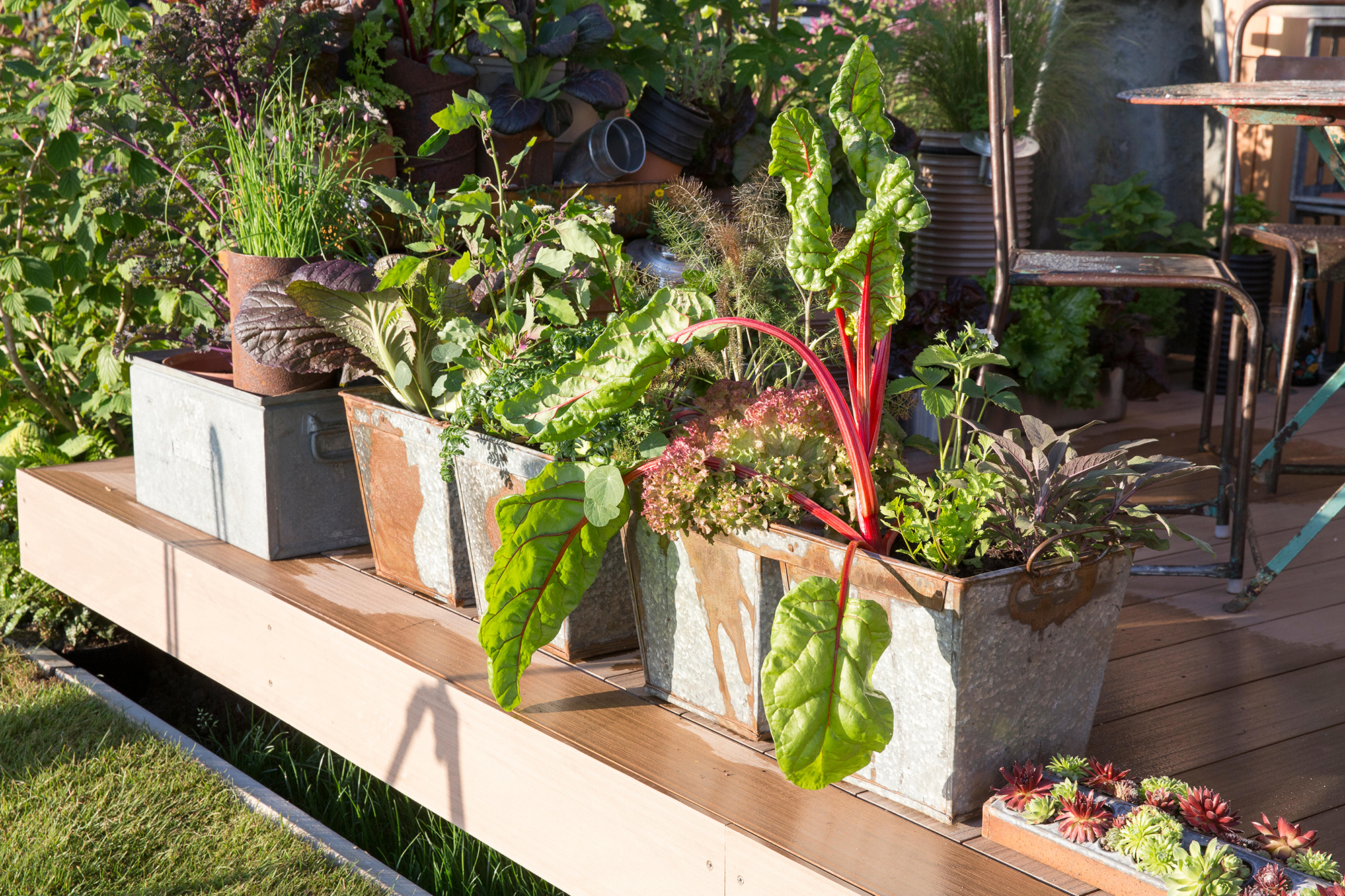
Vegetable garden container ideas give you the opportunity to increase the productivity of your patio ideas. From beans and brassicas to tomatoes and pumpkins, there are so many different kitchen garden ideas that can be grown on a patio. Opt for attractive pots that will look pretty as part of your patio display and then pair with your favorite crops. Position your planted pots in a place where the vegetables can thrive.
‘You don’t have to spend big on landscaping or dig up half your garden for a fancy vegetable patch, add a lot of character to your garden by planting in pots and containers and scattering them around your garden. Use them to line your patio or seating space to add symmetrical vibrance to your outdoor space. You can repurpose household items to give a unique look to your garden, think unwanted furniture, vintage finds or even an old wheelbarrow,' says Jack Sutcliffe, co-founder of Power Sheds.
3. Grow potatoes in a bag
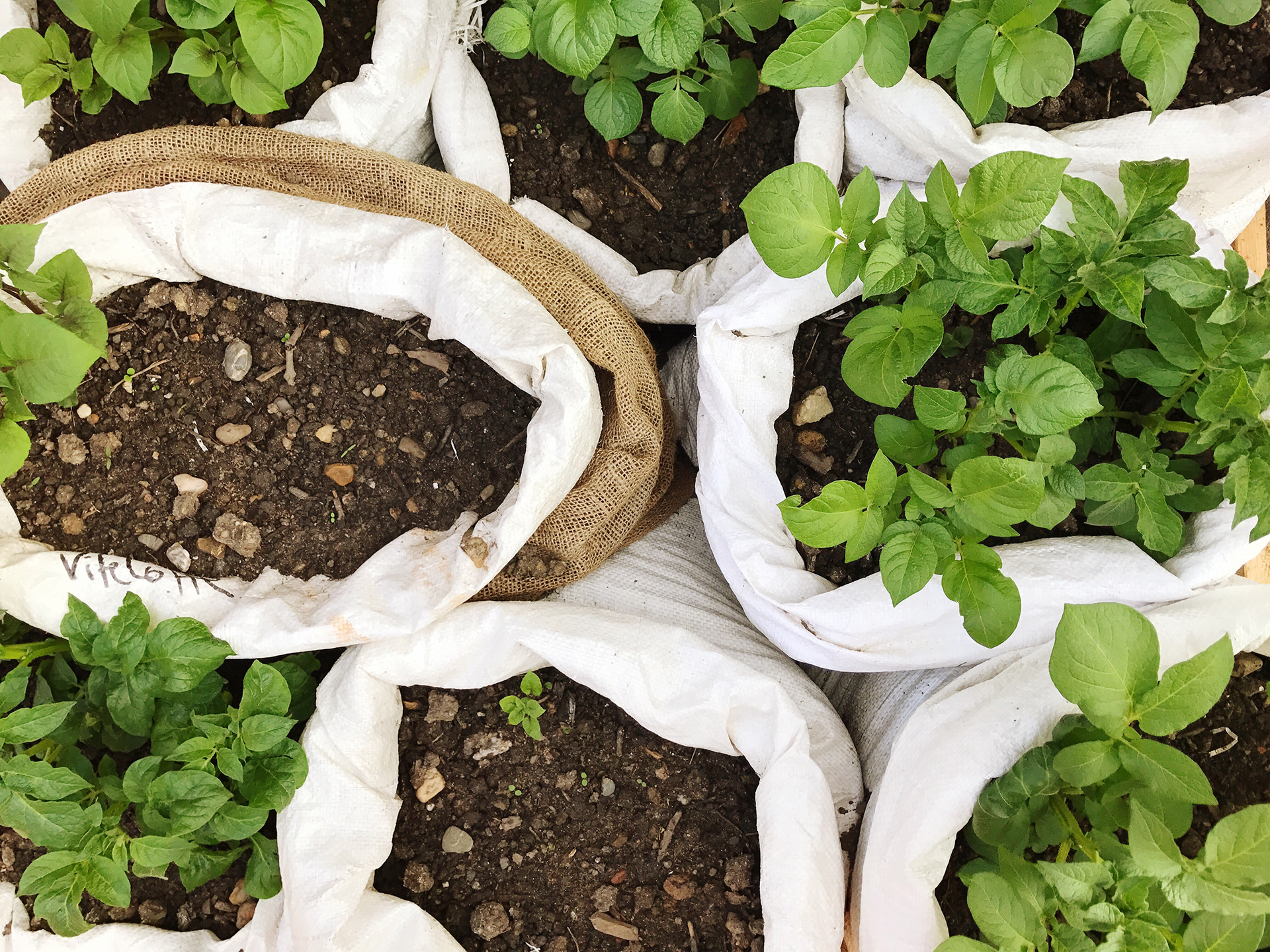
Potatoes are one of the easiest vegetables to grow and are actually best grown in containers over being grown in the ground. If grown in a border, potatoes spread into all the available soil, not just the small section where planted. This means that when it comes to harvesting, it is nearly impossible to harvest all of the crop. These left potatoes will then start unwanted potato plants in your border the following year. By growing in a bag or pot you can ensure that you don't leave any 'volunteer' potatoes behind to start new plants.
'Potatoes are a high-yielding plant that will really deliver. Planting potatoes in bags is a great addition to small vegetable garden ideas. Grow bags make harvesting potatoes really easy and it helps with the maintenance of the plant,' says Shelby DeVore, avid gardener and founder of Farminence.
If you want to know where to start make sure you know how to grow potatoes in a container or how to grow potatoes in a bag – you'll be harvesting spuds in no time.
4. Choose the best crops for vegetable container ideas
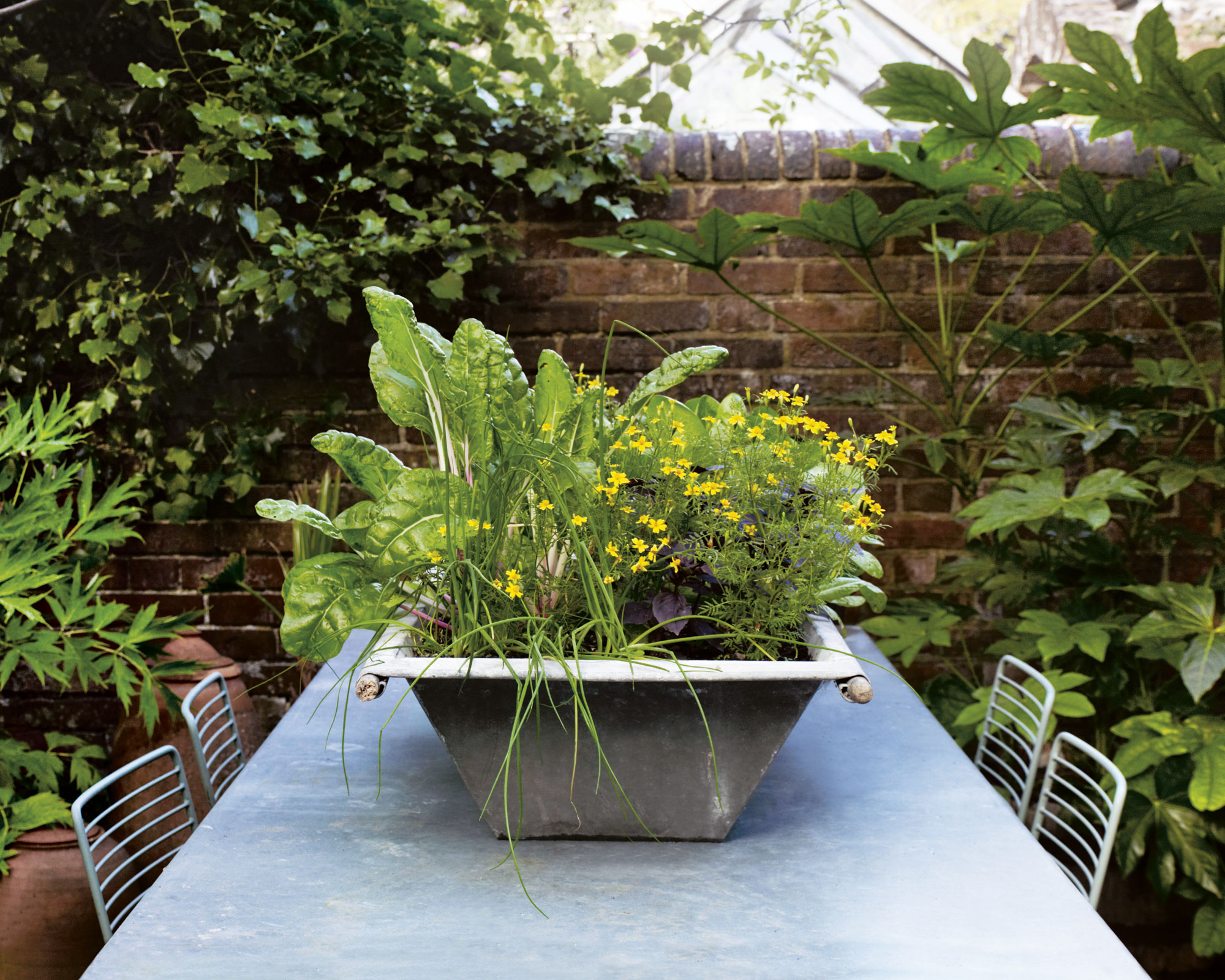
From delicate leafy herbs to root vegetables and fruit trees, there’s no reason why – given a little thought, forward planning and, of course, some tender loving care – you can’t grow varied, productive vegetable garden container ideas, whatever the space or conditions.
'If I could grow only one type of thing in my vegetable container garden, it would be salad leaves and I recommend new gardeners start with this,' says Great Dixter vegetable gardener and chef Aaron Bertelsen and author of Growing Fruit & Vegetables in Pots.
'They’re easy to grow, make good use of space and taste much better than shop bought. A couple of pots of cut-and-come again leaves will give you fresh salads for months.'
Other stars of the vegetable container garden include chard and kale, structural plants such as globe artichokes, and showstoppers like peas and gloriously varied sea kale.
5. Choose the right container

As well as complementing your garden, it's important to ensure that the vegetable garden container ideas you choose are compatible with the plants you want to grow.
'In general, containers need to be 4in wider and deeper than the root ball,' says Clapp. 'Shallow containers, around 12-16in deep, are suitable for shallow-rooted herbs and annual vegetables, as you can replenish the soil each season when you replant. Larger choices, such as aubergines or tomatoes, do best as one plant per container.'
'The container needs to suit the available space and the style of your property,' says Isabel Palmer, founder and author of The Balcony Gardener. 'From terracotta and stone to galvanized metal, the choice of container material is endless.
'Using a large container has distinct advantages, as it gives vegetable garden container ideas room to grow and works better aesthetically; lots of tiny pots can make a space look smaller and more cluttered.'
6. Nourish vegetable garden container ideas for a bumper harvest
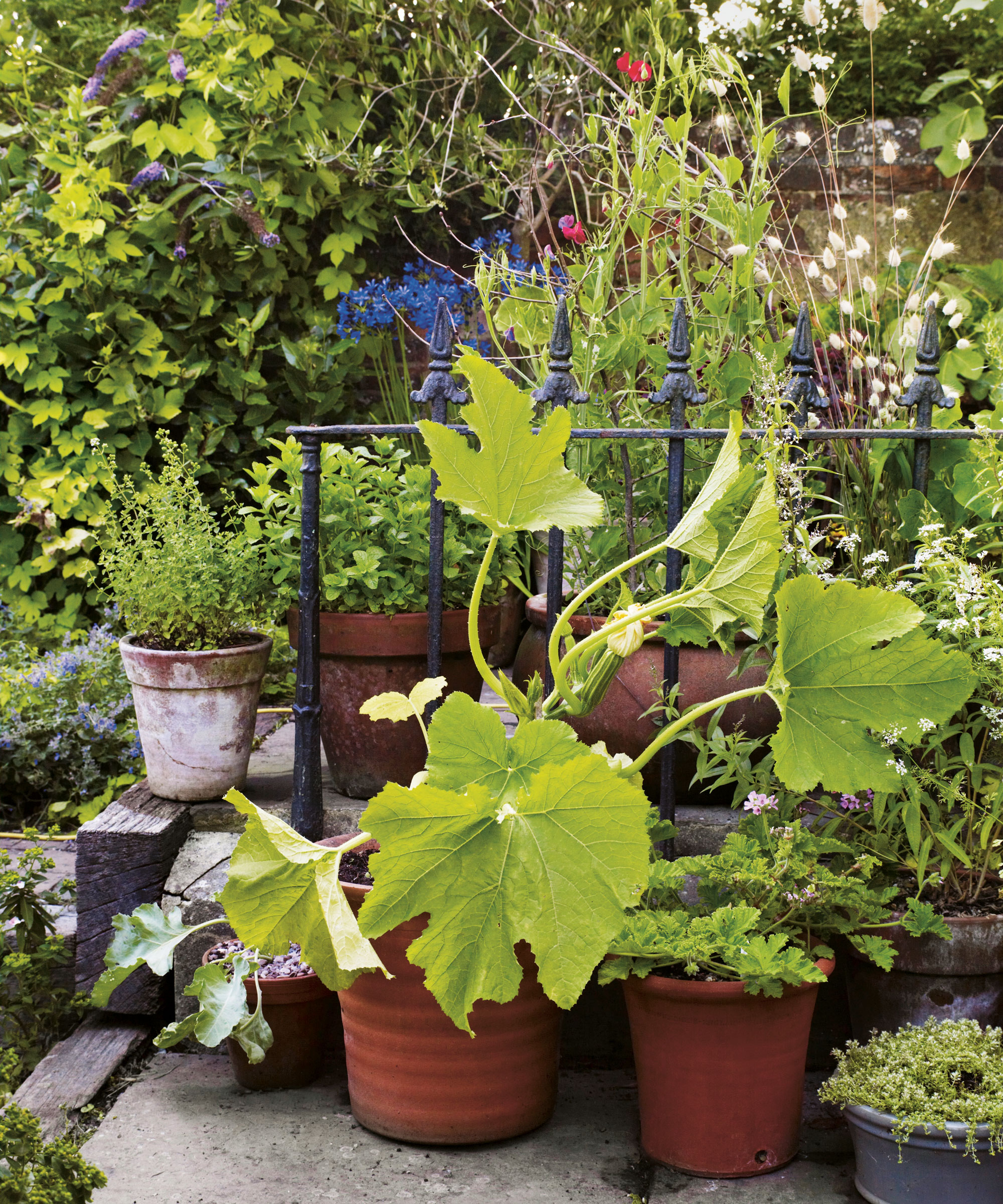
Typically there are three compost soil types available: for sowing seeds; for potting on small plants; and for long-term and permanent plantings. Sold alongside these you will also find multi-purpose composts that contain added nutrients, but soil-based mixes are always a better bet. Their structure means they retain nutrients for longer, and they are also more similar to the soil plants grow in naturally.
Most commercial compost mixes include a slow-release plant food, which lasts between four and six weeks. Then it’s a good idea to feed your containers once a week.
'I use liquid seaweed, an excellent feed for all crops, simply adding it to the watering can. Despite its name, tomato food is also a great all-round fertilizer, and is available in both liquid and granule forms. Plants also benefit from being top-dressed with organic matter. Sprinkle in a few handfuls of a fertilizer like blood, fish and bone meal. Then add a layer of fresh compost or leaf mould,' advises Aaron Bertelsen.
7. Design raised beds containers to suit your space perfectly
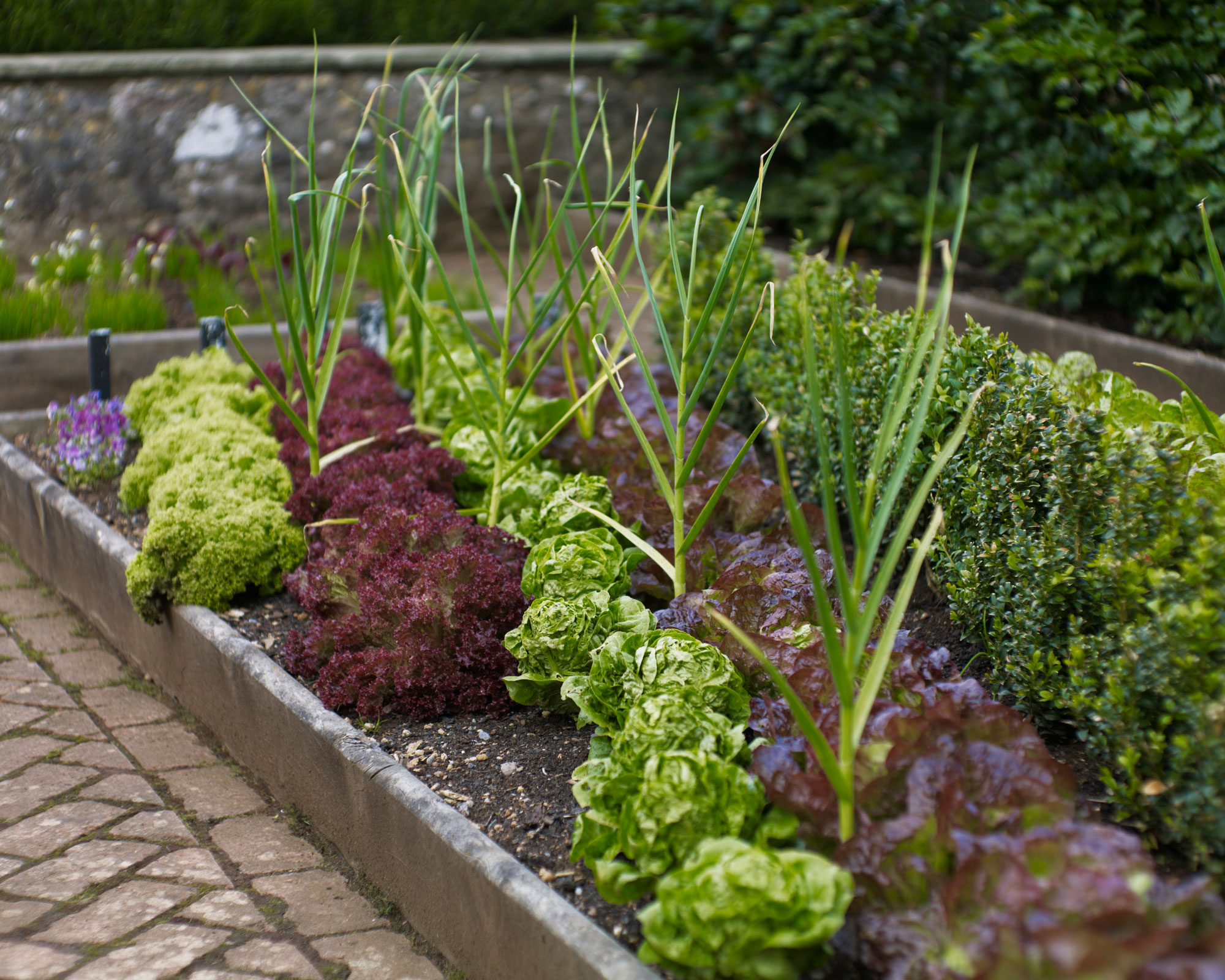
Raised garden beds are a great choice for vegetable garden container ideas – the main benefit being that you can learn how to build a raised garden bed so that it will fit your space, however large or small, and at a height that suits.
DIY garden beds tend to be constructed from wood, however, 'there are a number of good materials for raised beds,’ says Your Garden Made Perfect designer Tom Massey.
‘I like Corten steel for its durability and capacity to be bent or folded into unusual shapes. The deep rust color is also attractive and looks good with other materials such as buff-colored gravel or paving.’
Not everyone has the budget for Corten steel though. ‘Mild steel is a good alternative,’ suggests Tom. ‘It’s not as long lasting, but will still outlive timber.’
If you do choose timber, use untreated wood to avoid contamination of any edible plants. Untreated oak sleepers are a good option, or more affordable thermo-treated pine.
8. Grow vegetable garden container ideas in a greenhouse
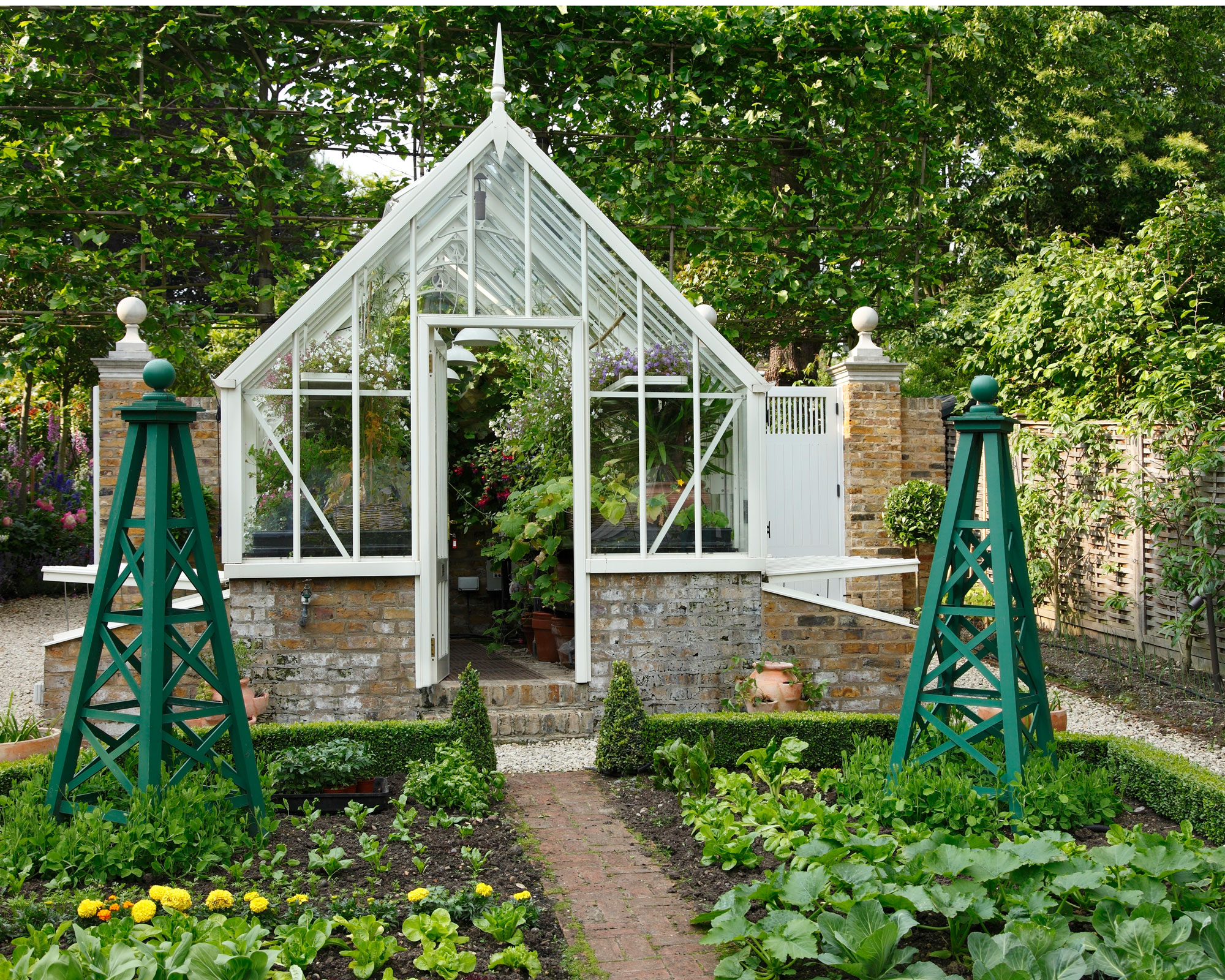
If you're wondering what vegetables to grow in a greenhouse, then be sure to plan well before you start a new growing season. Some gardeners decide to build raised beds or even ground level beds in their greenhouse, but the majority prefer to adopt vegetable garden container ideas, preferring their ease and flexibility.
Of course deciding what to grow can be a challenge – start by considering the best food to grow in a greenhouse and go from there. 'Identify what you want to grow and which varieties of crop will happily co-exist side-by-side,’ recommends Alitex’s John Lawson.
A multitude of plants and greenhouse ideas all requiring widely different temperature, light and humidity levels are unlikely to thrive, unless the greenhouse has been designed from the outset to have separate partitioned zones in which different growing environments can be maintained.
‘Make sure you stick to a routine. Water at the same time every day. Keep an eye out for pests such as slugs, greenfly, whitefly and red spider mite, and act quickly to prevent an infestation.’
9. Plant a mix of veg in willow planters
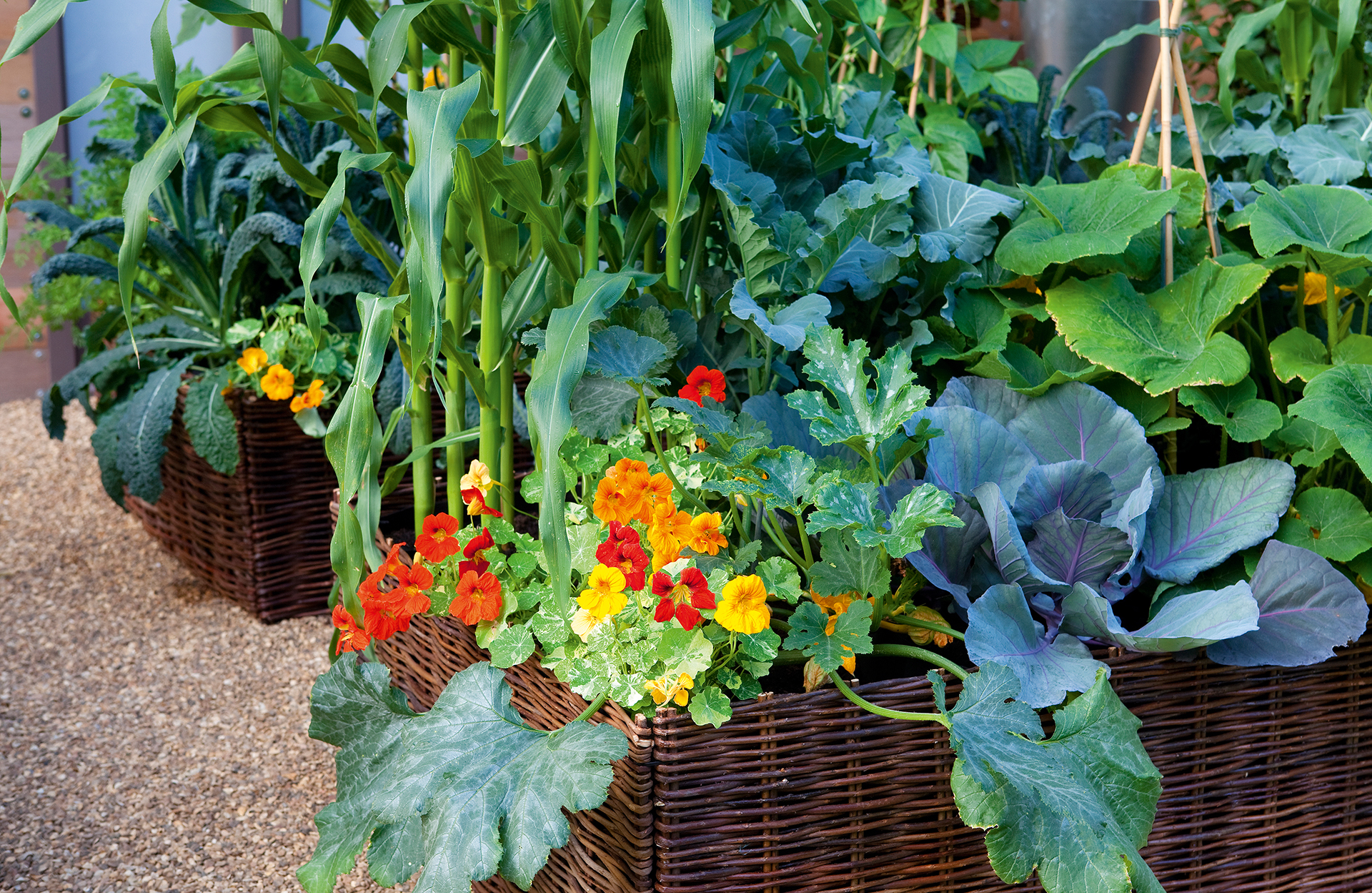
Willow and wicker planters are perfect for adding a natural look and texture to the patio, and help to soften hard landscaping.
Here, a variety of vegetables, including zucchinis, brassicas and corn, are cleverly used as companion planting with nasturtiums.
'Nasturtiums help to deter aphids and are often used as a sacrificial plant so aphids and black fly attack them but stay away from your precious vegetables,' says Emma O'Neill from Garden Organic.
10. Plant trailing squashes and pumpkins in large containers
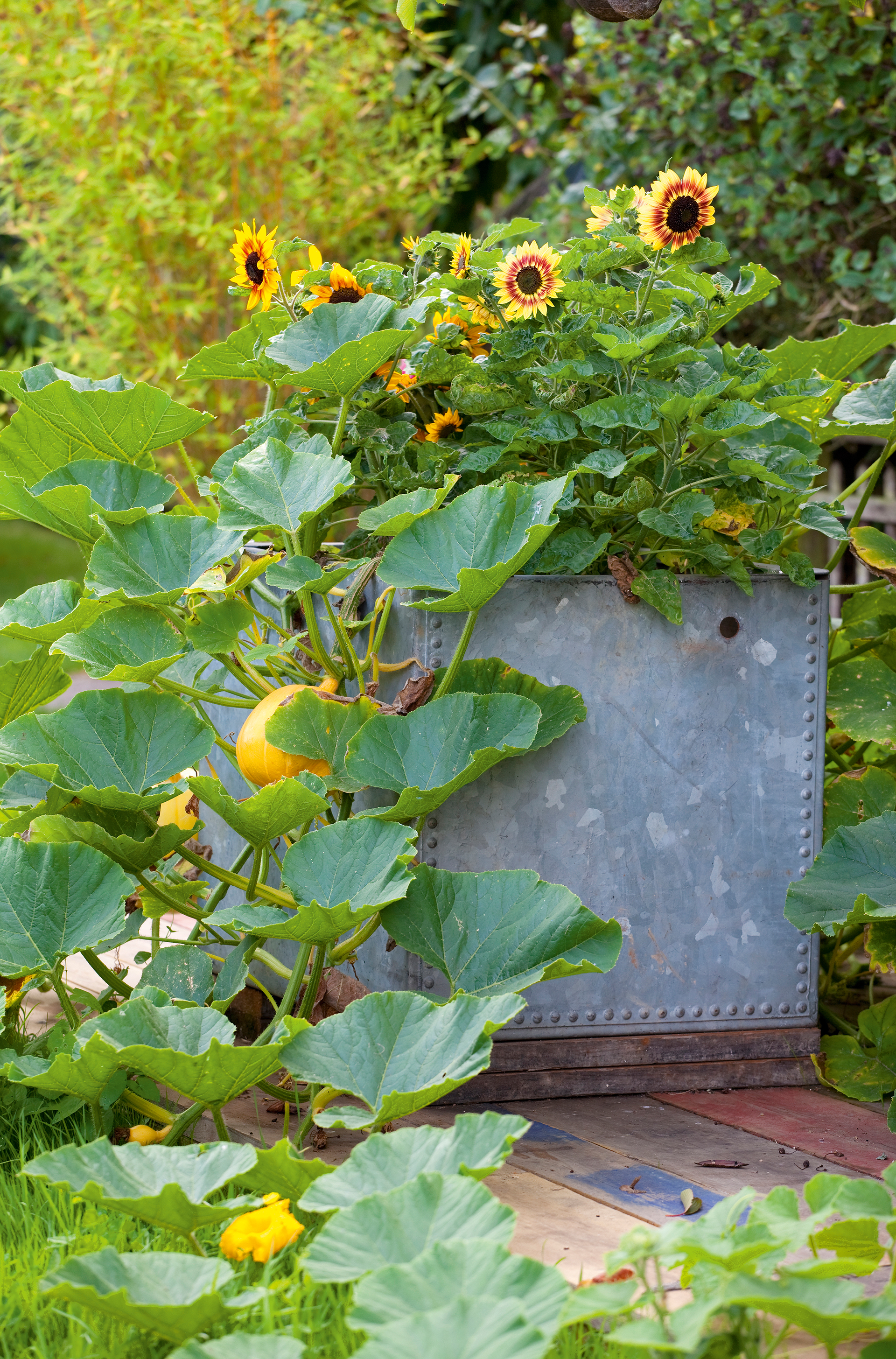
For vegetable garden container ideas with impact, consider trailing striking pumpkins and squashes from large planter box ideas.
Trailing vegetables have a soft, romantic look that's ideal for cottage garden ideas. However, they can spread out by as much as 6ft, so need a bit of growing room.
You can also grow pumpkins and squashes vertically in containers, adding support to grow upwards – perfect for small spaces.
In this garden, dwarf sunflowers beautifully complement the colors of the fruit, while the galvanized metal container adds a classic look and will weather over time.
11. Plant beans and other veg in repurposed planters
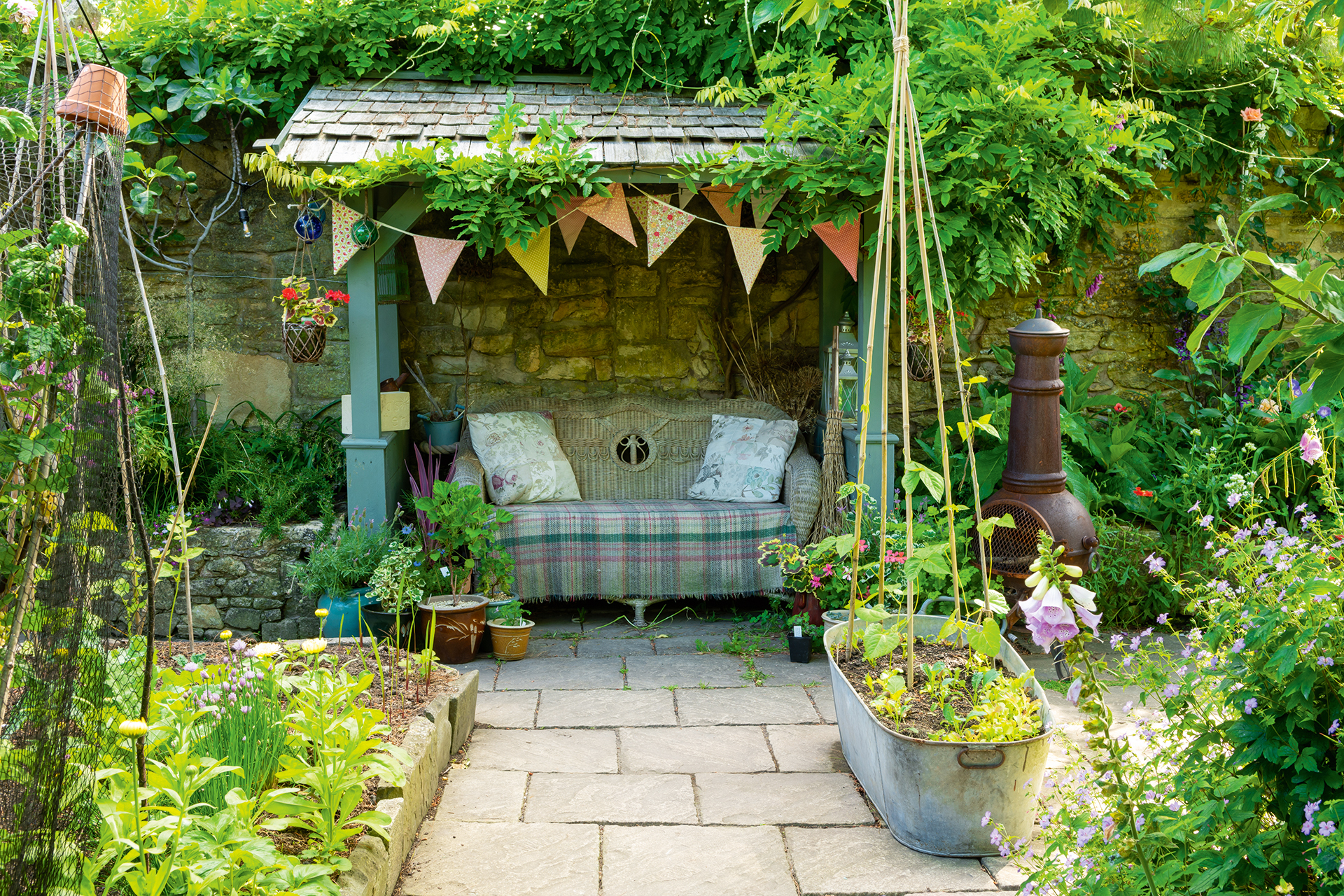
Height is an essential component in any backyard ideas, adding balance and structure to the space. Height is just as important when designing vegetable garden container ideas. This is where vegetable garden trellis ideas come into their own.
Growing runner beans and peas can make a striking addition to cottage patio ideas and can be grown up trellis or canes and enjoyed for both their foliage and attractive flowers. 'A wigwam of beans in a container takes up little room and looks pretty in flower,' says Clapp.
'Make use of varieties with unusual flower colors, such as broad bean Crimson Flowered and runner bean Celebration or Painted Lady,' adds Peter Adams, edibles team leader at RHS Rosemoor.
12. Grow tomatoes in pots
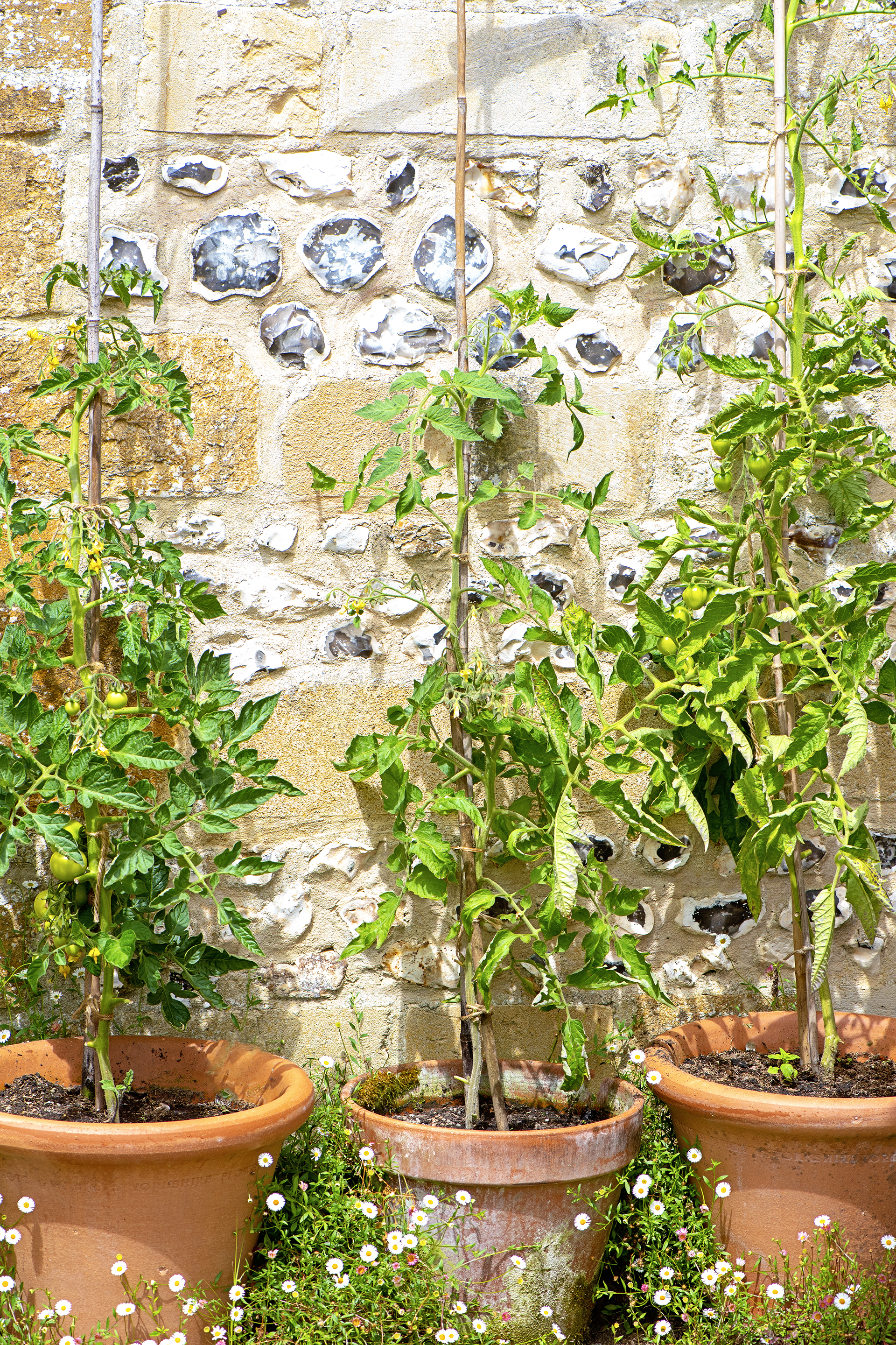
Growing tomatoes as one of your vegetable garden container ideas is perfect, as they are space efficient and enjoyable to tend to on the patio.
There are a few considerations, as you will need to choose a variety of tomato that is suited to the outdoors in your climate. However, there are a huge range to choose from.
Most tomato varieties can be grown in containers, but you will need to bear in mind their ultimate size and growth habit if adding them to a small garden or balcony.
Sungold, Patio and Terenzo are popular cherry varieties for containers, Tumbling Tom is ideal for hanging baskets, Big Boy and Champion are good bush varieties, and Gardener's Delight is perfect for growing as a cordon.
13. Make a pretty plant display
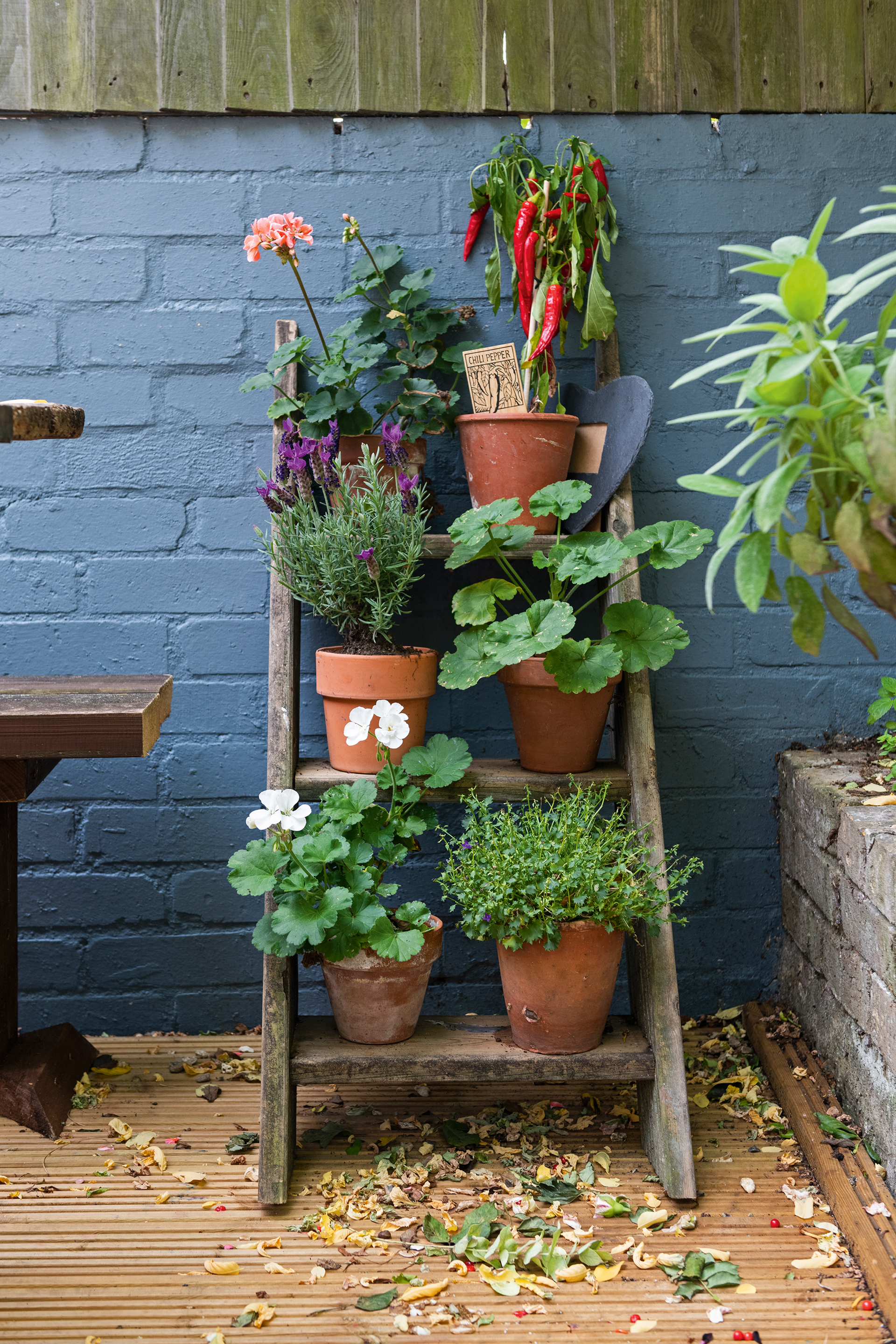
Crops that can be grown in smaller containers can be used to create a charming display on a plant stand. Here, chilis and herbs have been placed alongside potted geraniums, for a mix of foliage and flowers.
Plant stands are available as both wood or metal, and are ideal for adding vertical interest where a trellis would not be an option. Alternatively, you could repurpose vintage steps to add instant character to your garden.
14. Use a mix of different vegetable containers

Even if you already have beds in your garden, vegetable garden container ideas can be used to play with height and add a layered effect.
'I like to use galvanized metal tubs and large zinc planters. A reclaimed onion box or wine crate also makes the perfect container – the warm tones of the wood providing a perfect foil for the plants,' says Palmer.
'If you crave a little color, then just paint an upcycled container.'
15. Plant a cut-and-come-again lettuce bowl

Cut-and-come-again lettuce is an essential crop for salad lovers, and an ideal first crop for beginners.
To grow lettuce, simply plant up a few containers using a mixed lettuce seed variety and harvest the leaves regularly, snipping off the older greenery from the outer edges.
If you find pests a problem, a container of this size can be easily be protected with mesh or netting, so only you will enjoy feasting on your home-grown bounty.
Sow a successional crop and you will be in supply of this healthy salad for much of the year.
16. Get a vintage look with upcycled containers
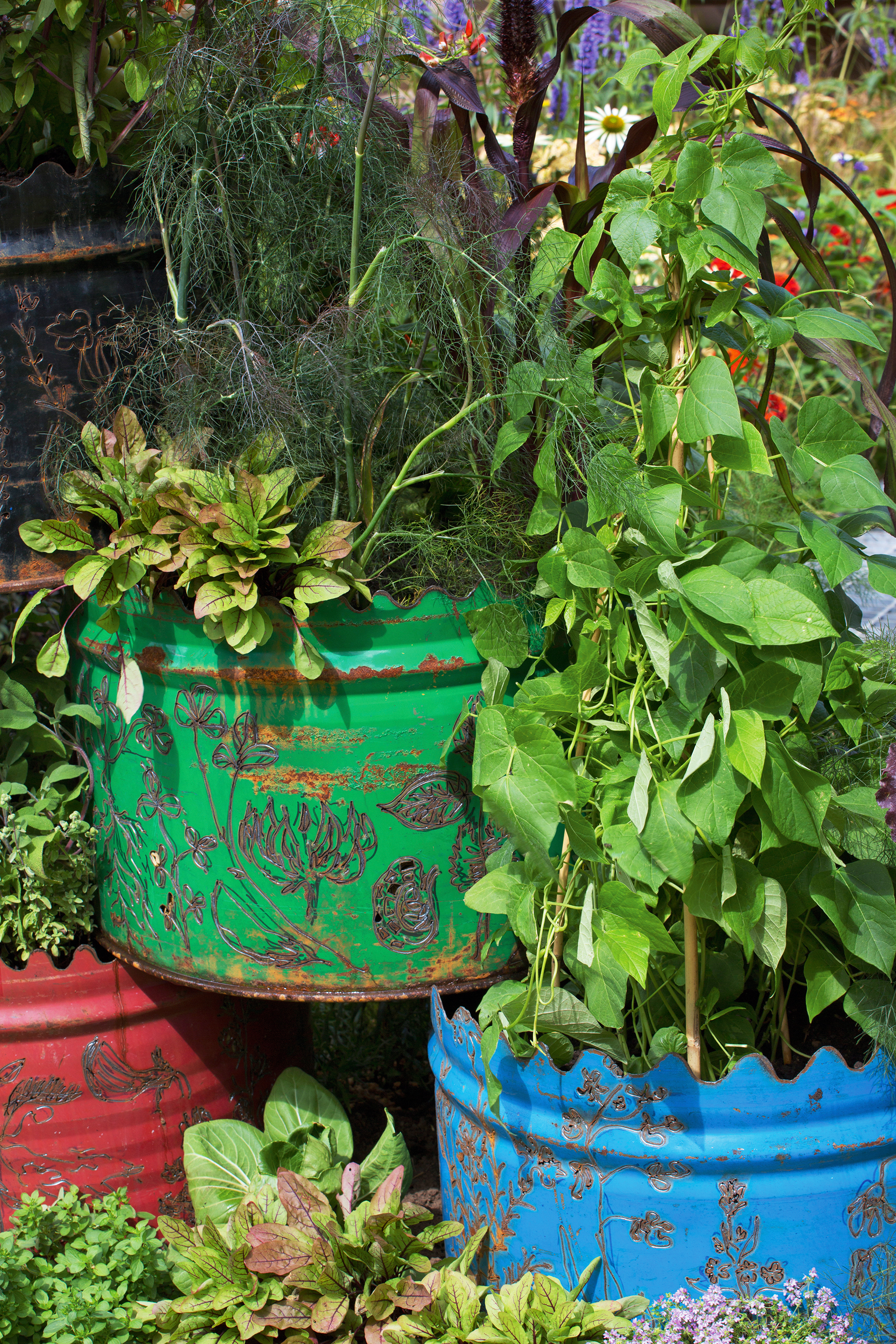
One of the most creative vegetable container garden ideas, is to upcycle and paint your own planters. Using bright colors will beautifully offset the foliage of your crops.
In this garden, vintage steel drums have been painted in bright shades and etched with flower designs, but you can achieve any look you want on different types of container, including wooden and terracotta designs.
Use your upcycled containers to plant climbers such as beans and peas, or low-growing veg such as brassicas, fennel or carrots.
'If you are looking for vintage or unusual pieces, local sales, antiques centers and charity shops are rich hunting grounds. When choosing, always consider the weight-bearing capacity of balconies and roof gardens, if you live in an apartment,' says Palmer.
17. Plant salads and herbs in the center of a table

Imagine how delightful it would be to eat lunch at this planted table, picking herbs and salad leaves as you go along.
This custom table is designed with a central planter, but you can easily recreate the effect by positioning a long container in the middle of your table. Add color to the display by interspersing the crops with low-growing flowers.
A creative patio design really maximizes the potential to grow vegetables in containers – this one features steps holding baskets of brassicas and planters running around the perimeter.
18. Make a display with statement foliage
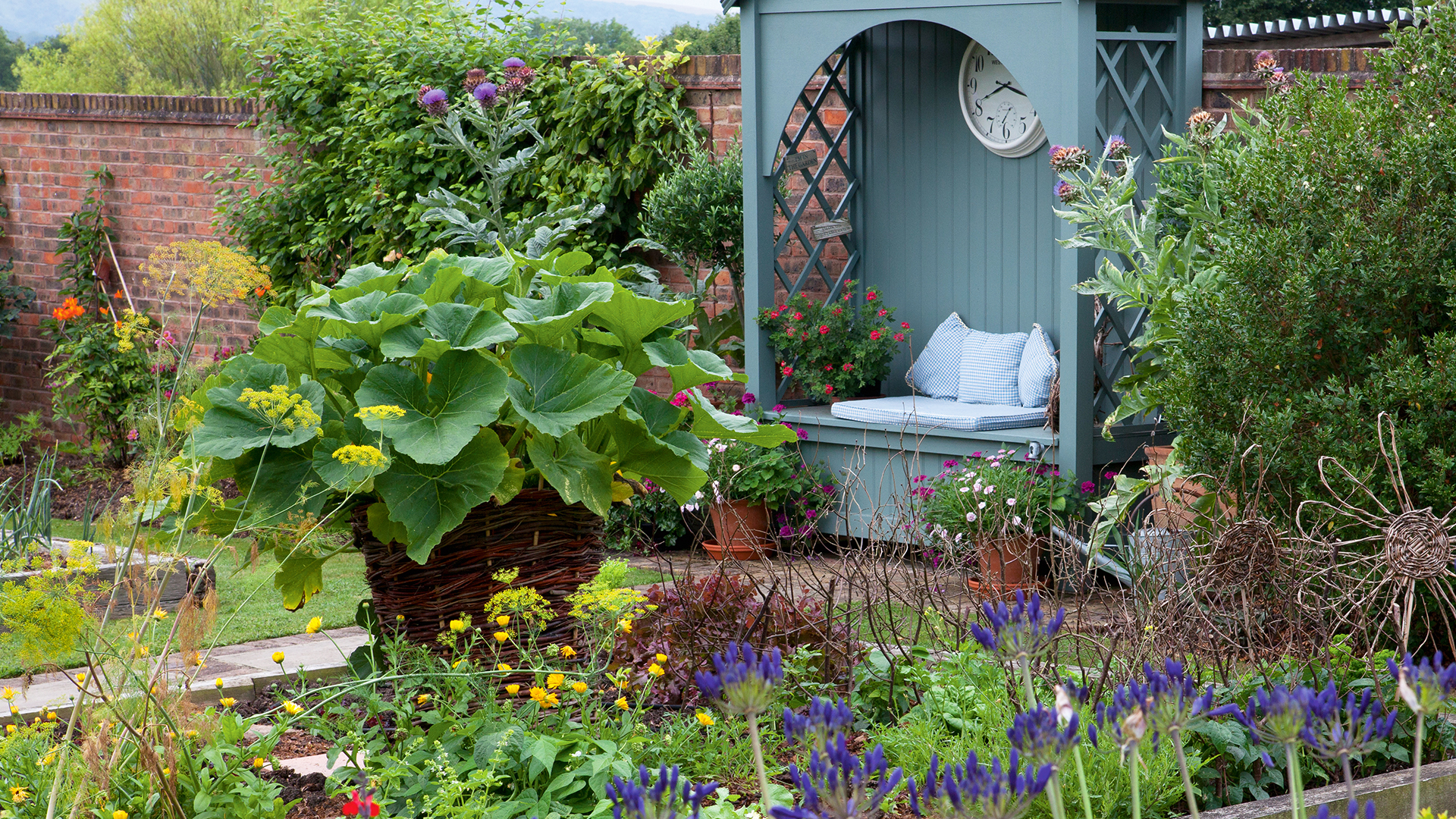
Vegetable garden container ideas can be productive and beautiful, with statement foliage used to make a dramatic centerpiece.
'When choosing varieties of vegetables to grow, look for ones with colorful leaves and stems, like beetroot Bull’s Blood, or unusual leaves like curly kales that come in a fantastic array of colors, such as kale Candy Floss,' says Adams.
Squashes and pumpkins tend to have big leaves that can be used to add structure to a garden, but even zucchinis planted at a higher level can create a stunning focal point.
19. Grow microgreens in pots for a quick, easy crop

If you're very limited on space, or lack the patience to wait several weeks or months for your crops to grow, then growing microgreens is the answer.
These miniature vegetable or herb seedlings are packed with flavor and nutrients, and are ready to harvest in as little as five days.
‘They may be small, but it’s as if all the flavour of the mature plant is concentrated,’ says Alex Mitchell, author of Crops in Tight Spots.
You can grow microgreens in containers either indoors on a sunny windowsill, or in the garden. They need to be densely planted in order to maximize the crop, and are delicious added to salads and sandwiches.
20. Position pots among the flowers

Pots don't have to be confined to the patio, and can look lovely nestled in among your flower bed ideas. In fact, taking this approach can offer companion planting benefits, as pots can be moved close to flowers that deter pests.
'Edibles among your flower beds can blend attractively beside other plants, emulating the traditional potager cottage gardens of the past,' says Clapp.
Strawberries are a classic choice for containers as they do best raised off the ground. Here, a vintage chimney pot has been used as a tall planter, and is accompanied by a tomato plant and pot of carrots.
What vegetables grow best in containers?
Most vegetables will grow well in containers, but those that really thrive include many of the summer vegetables that will be usefully to have on hand on the patio as you pass from kitchen to barbecue and back. These include: tomatoes, eggplant, green beans, lettuce, peppers and chilis, radishes, herbs and even squash.
How do you layout a vegetable garden container?
The best way to layout a vegetable garden container is to adopt a laid-back assortment of pots, gathered naturalistically in waves. Also allow your layout to be guided by companion planting ideas so that you can get you the best results in your garden.
'Positioning close to the kitchen allows you to pop out quickly and grab a quick handful or a larger harvest as needed,' says gardening expert Leigh Clapp
What size container do I need to grow vegetables?
The size of container you need to grow vegetables obviously depends on the type of vegetables you are growing. For small vegetables, such as herbs and lettuce – and dwarf varieties, a two gallon container will be large enough. For mid-sized vegetables, such as peppers, tomatoes, beans and eggplant, you will ideally need a 5 gallon container.
Is it safe to grow vegetables in plastic containers?
Yes, it is safe to grow vegetables in plastic containers. However, if you are concerned then opt for plant pots that are BPA free as this will ensure no harmful chemicals seep into your food.

Melanie has worked in homes and gardens media for two decades. Having previously served as Editor on Period Living magazine, and worked on Homes & Gardens, Gardening Etc, Real Homes, and Homebuilding & Renovating, she is now focusing on her passion for gardening as a Senior Editor at Gardening Know How. As a keen home grower, Melanie has experimented with pretty much every type of vegetable at some point – with mixed results. Often it is the simplest things that elude you, which may explain why she just can't seem to master zucchinis.
- Holly ReaneyContent Editor and Sub-editor